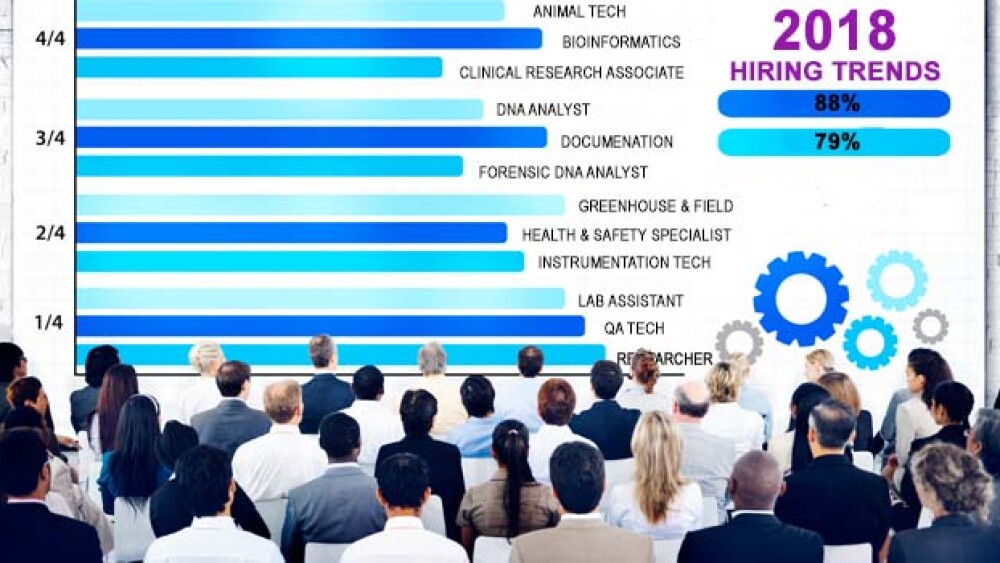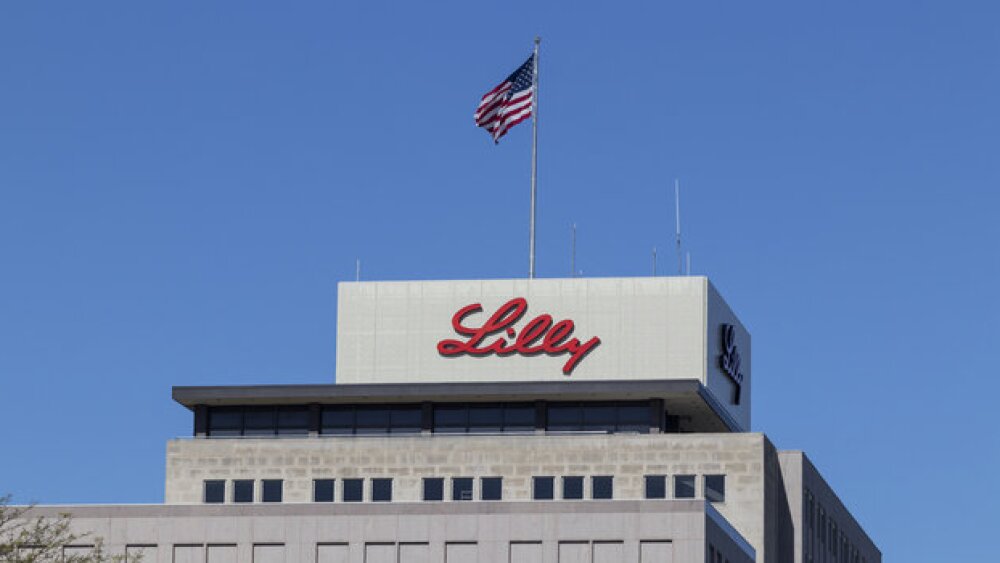Here are five trends job hunters may see in the life sciences next year.
With the end of 2017 and the beginning of 2018 speeding toward us, everyone’s looking into their crystal balls to determine what the life science job market trends are.ge
Paul Strouts, global managing director of Hays Life Sciences, a U.K.-based recruitment firm, points out five trends he sees for job hunters in life sciences.
1. Emerging Markets
Or what he refers to is “pharmerging markets.” Which is to say that Asia—especially China—and Russia, as well as the Middle East, have growing middle classes that are becoming targets for international biopharmaceutical companies. Strouts writes, “These markets are, themselves, turning towards the health issues that affect their populations, with programs like Healthy China 2020 having a substantial impact on medical device firms, drug manufacturers, hospital operators and the wider healthcare community. This trend bodes well for candidates seeking global opportunities, especially those with international experience and language skills.”
Most large pharma companies are looking in particular to the China market, with a broad range of employment possibilities in both research, sales and operations. An example includes:
Scientist, Molecular Biology for BioDuro in Shanghai, China. The position calls for at least a Master of Science and three or more years of experience in cell and molecular biology, biotechnology, biochemistry, genetics or related field. The candidate will be trained and work directly in a new team focused on cell-based cancer immunotherapy.
2. Rising Healthcare Costs
This is a trend unlikely to disappear, despite governments, consumers and payers pushing back against rising drug prices. Drug development is enormously costly, very high risk, and increasingly geared toward smaller subpopulations of patients. Strouts writes, “There is increasing pressure from governments to provide evidence of the positive health outcomes associated with biopharma industry products. This cost dimension will exert an impact on the supply chain across the board, and ultimately drive more innovation.”
Certainly, innovation driving down costs for manufacturing and distribution, and any approaches in automation or data science that can help de-risk the development process or shorten time to approval would be welcome.
An example of a related position includes:
Director, Health Economics and Payer Analytics for AstraZeneca Pharmaceuticals in Gaithersburg, Maryland. This individual will play a key role in, the company says, “channeling our scientific capabilities to make a positive impact on changing patients’ lives.” The role calls for the candidate to provide high-quality health economics and payer analytics for pharmaceutical development projects, global payer evidence plans, and market access and pricing strategies. The position calls for at least a Bachelor’s degree with in-depth expertise in health economics and payer analytics and knowledge of how to apply them to pharmaceutical development at an international level.
3. Specialty Pharma
As mentioned above, one of the trends in drug development is to develop drugs for disease subpopulations. Until recently, companies worked to develop drugs for large populations, largely staying away from rare diseases. Governments put in place incentive programs to encourage drug companies to invest in developing drugs for rare and so-called orphan diseases. What is also occurring is that genetic and genomic data is providing insight into drugs that are more appropriate for subpopulations of diseases. This is happening particularly in the oncology market, where a drug may be approved in a subset of patients with specific hormonal or genetic markers. In that regard, all cancers are starting to look like rare cancer, with smaller populations of patients.
Five Prime Therapeutics in South San Francisco has two positions for Scientist I – III, Immuno-Oncology Research. The positions call for a PhD in immunology, cancer immunology, or a related field with more than four years of relevant biopharmaceutical experience. It also calls for expertise in T-cell biology. The individuals will work in the company’s Immuno-Oncology group, and oversee identifying and validating novel cancer immune therapeutics.
4. Mergers and Acquisitions
This is hardly new. Although 2017 hasn’t been nearly as active a year for M&A activity as 2015 and 2016, there have been plenty of high-level mergers in the industry, including Gilead Sciences’ acquisition of Kite Pharma for $11.9 billion and Novartis’ purchase of Advanced Accelerator Applications for about $3.9 billion.
There are many reasons companies merge and acquire. Often small biotech companies were set up with the idea of getting a compound to proof-of-concept and then be acquired by a larger company to take it through clinical trials and onto the market. Sometimes larger companies buy smaller companies to bolster their pipelines or to grow revenue. Strouts notes, “Mergers and acquisitions are always attended by job disruption and new opportunities, so this is an area worth watching.”
Gilead Sciences has numerous job postings, including:
Research Scientist I in Foster City, California. The position calls for a PhD or equivalent and at least three to four years of relevant post-graduate experience. The individual will work within the company’s Research unit, focused on lead discovery efforts for fibrosis targets.
5. Tech
Strouts refers to this as “technology on steroids,” and it refers to the mixing of biopharma with tech, specifically informatics, artificial intelligence, data science and other computer-based technologies. He writes, “Radical developments in gene editing and molecular engineering have paved the way for expanded investment in genetics and genomics, so expect to see job growth in this area. With tech giants like Google, Apple, IBM and Samsung all investing in the development of artificial intelligence to diagnose and treat disease, the implications for jobs in digital health and every aspect of healthcare provision cannot be underestimated.”
It’s no secret that Google’s Verily and Calico are deeply involved in healthcare. In March 2017, Calico inked a five-year collaboration deal with Cambridge, Mass.-based C4 Therapeutics, to “leverage C4T’s expertise and capabilities in targeted protein degradation to jointly discover and advance small molecule protein degraders as therapeutic agents to remove certain disease-causing proteins.”
An example includes:
Clinical Data Manager for Allakos in San Carlos, Calif. This position will support the Allakos Clinical Development and Medical Affairs/Bioanalytics teams by managing Data Management activities and personnel in designing and implementing clinical trials. The position calls for a Bachelor’s degree in life sciences or mathematics, an equivalent combination of education and job experience, and a minimum of five years of progressively responsible experience in clinical data management in the biopharma or contract research organization (CRO) environment with two years of experience in a leadership role.
It’s unlikely that any of these trends will slow down, either. And since most crystal balls aren’t completely accurate, there may be other unexpected trends coming in the near-future as well. One thing is certain—many will create opportunities for flexible and talented life science job seekers.





